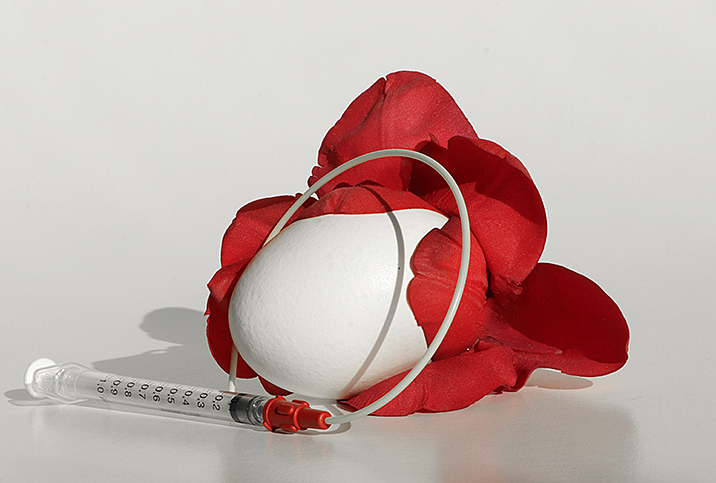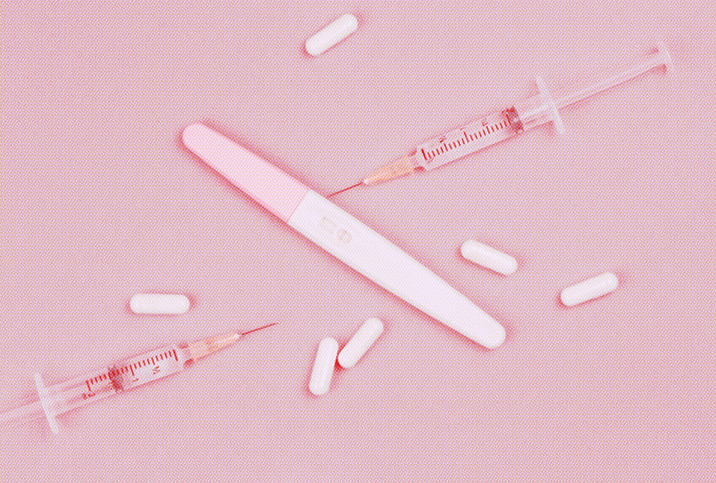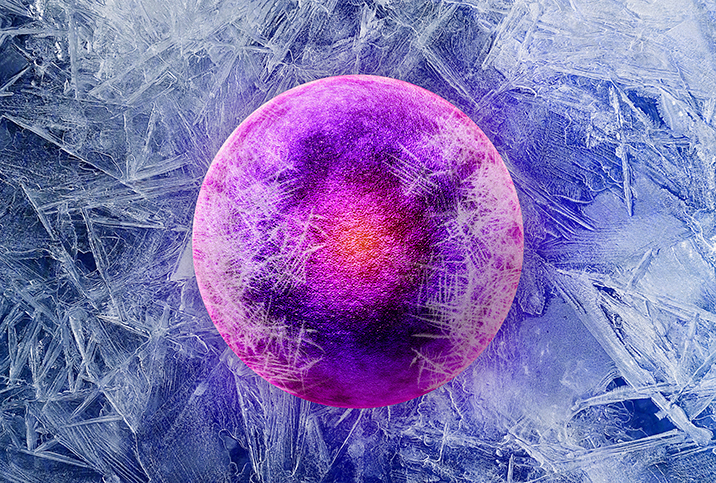Breaking Down the IUI Process

If you're struggling to conceive, intrauterine insemination (IUI) is often one of the first assisted reproductive technologies (ART) suggested.
IUI is a fertility treatment where sperm are placed directly into the uterus, bypassing the "usual" route of travel.
"In patients who have open tubes and a sperm count that is low or adequate, an IUI can help maximize the number of high-quality sperm that reach the egg," said Alan Copperman, M.D., an OB-GYN at Mount Sinai Hospital in New York City.
These candidates include patients with unexplained infertility, ovulation disorders or suboptimal sperm counts.
The IUI procedure is timed specifically around when you're ovulating. A simple procedure, it can even be performed in the doctor's office without sedation. A semen sample is washed to remove the seminal fluid and low-quality sperm. The semen sample is then injected into the uterus using a thin catheter, depositing the sperm close to the egg by the fallopian tubes, where fertilization takes place.
The IUI procedure is far less invasive and less expensive than in vitro fertilization (IVF). While the procedure is simple, like all aspects of infertility, the process can easily become overwhelming. But don't worry. We'll break down some of the unknowns surrounding this procedure and answer some common questions.
Step-by-step IUI
The third day after your period begins is when an IUI cycle officially kicks off. While there are multiple steps in the overall process, it all starts with some simple bloodwork.
Checking your hormone levels
The partner intending to be impregnated needs to get important bloodwork done to check hormone levels. These hormones include follicle-stimulating hormone (FSH), luteinizing hormone (LH) and estradiol (E2).
FSH stimulates the development of estrogen and eggs during the first half of the menstrual cycle. This hormone is an indicator of the quality and quantity of eggs available in the ovarian reserve.
The LH level is important to monitor because it plays the vital role of surging to signal ovulation. An elevated level of LH could be a sign of polycystic ovary syndrome (PCOS) or other disorders, which is important to know before proceeding with an IUI cycle.
Estradiol, a form of estrogen, is important to measure because it can indicate an issue with the ovarian reserve.
Some people may take stimulation medication
Depending on the specifics of your hormonal situation and your family planning goals, your doctor may put you on medications that stimulate your ovaries to develop more follicles, or eggs, during the cycle.
By taking medicine such as Clomid or Letrozole, you can increase the number of follicles that could potentially be fertilized during IUI, often to two or three eggs instead of the one egg common in unmedicated cycles.
Of course, increasing the number of follicles means a higher chance of having multiple births, which is a risk only you and your doctor can assess.
Monitoring ultrasounds
Whether you choose to take follicle stimulation medicines or go with an unmedicated cycle, you begin going to your fertility clinic for monitoring ultrasounds around day 10 of the cycle.
These quick, internal ultrasounds make sure your follicles are developing properly and there are no issues, such as ovarian cysts, that would decrease your chances of a successful cycle. You repeat the ultrasounds every other day until your clinic is satisfied with the size and maturity of your follicle(s). Clinics often begin ultrasound appointments at 7 a.m. to minimize the disruption to your daily life.
The trigger shot
Once your clinic is happy with the size and state of your follicle(s), it's time to schedule the IUI.
Thirty-six hours before the scheduled IUI, you inject a small amount of human chorionic gonadotropin (hCG), the pregnancy hormone. This hormone signals to the body that it's about time to ovulate. After the hCG is administered, you ovulate about 36 hours later. This injection helps the doctor control the timing of your ovulation and allows the IUI to be scheduled so sperm are waiting for the egg(s) to be released.
To take the "trigger shot," you stick yourself in the abdomen with a needle encased in a plastic administration tube. It looks a lot like an EpiPen. You can ice the area beforehand, though the needle is so tiny it does not really hurt. Pinch the skin in the area where your doctor wants you to administer the shot and give yourself the hCG injection. It's a very quick process. The sensation of sticking yourself with a needle is difficult for many people, and you may find it easier to have your partner administer the quick injection.
Right before the procedure
The day of the procedure, you arrive at your clinic at the appointment time and check in. The first matter of business is for the sperm-producing partner to produce a semen sample. The semen sample is then washed to remove the seminal fluid and the lower-quality sperm, leaving behind the best of the sample to be inserted in the IUI process.
You also receive an internal ultrasound to make sure the follicles still look good. The clinic wants to see exactly how many follicles matured and check once more that no cysts or other speed bumps have cropped up before going through with the procedure.
During the procedure
For the procedure, you lie down on the exam table and put your feet in the stirrups—a lot like getting a Pap smear. A nurse performs an external ultrasound on your uterus to help the doctor guide the sperm to the right place. For example, if you've developed a mature follicle on your left ovary, the doctor will likely attempt to place the sperm as close to the left fallopian tube as possible.
Using the ultrasound for reference, the doctor guides the catheter containing the washed sperm. It's inserted into the vagina and passes through the cervix, and the sperm are deposited where the doctor thinks is best.
The entire process is over quickly, lasting about a minute. At that point, the doctor advises you to stay reclined for 10 to 20 minutes, allowing the sperm to do its job.
Does IUI hurt?
The IUI certainly can be unpleasant and uncomfortable. However, it's not an overly painful procedure. It's comparable to an extended Pap smear, with the catheter causing a pinch that can be bothersome. However, the duration of the procedure works in its favor, because it only lasts a minute or two.
The pain goes away as soon as the catheter is removed. Some women may experience mild cramping afterward. You may be instructed to lie down for about 20 minutes, so you get a chance to regain your bearings from any discomfort you may have experienced.
IUI success rate
It's hard to define the exact success rate you can expect from IUI. Success depends on the underlying comorbidities, according to Kecia Gaither, M.D., M.P.H., director of perinatal services at NYC Health + Hospitals/Lincoln in the Bronx in New York City. Factors including the age, body mass index (BMI) and overall health of the patient cause a lot of variation in the predictability of results.
While IUI success rates are lower than IVF success rates, Gaither said, in general, a healthy young couple attempting pregnancy has about a 25 percent chance of success in their first cycle. For a noninvasive, lower-cost procedure that is accessible to many infertile patients, an IUI has decent rates of success.
IUI can also be repeated for additional chances of a successful outcome, bringing the cumulative pregnancy outcomes into the 30 percent to 45 percent range, according to Gaither. Most doctors recommend a couple of attempts at IUI before considering moving on to IVF or other options, as 90 percent to 95 percent of successful IUIs occur within the first three or four attempts.


















